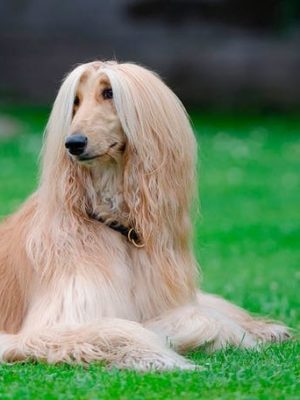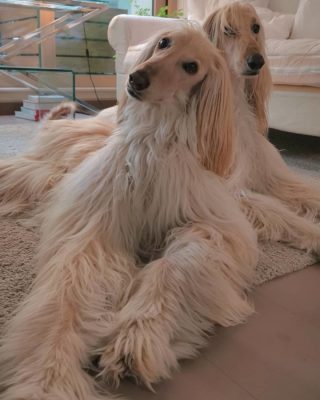Aboriginal Afghan Hound
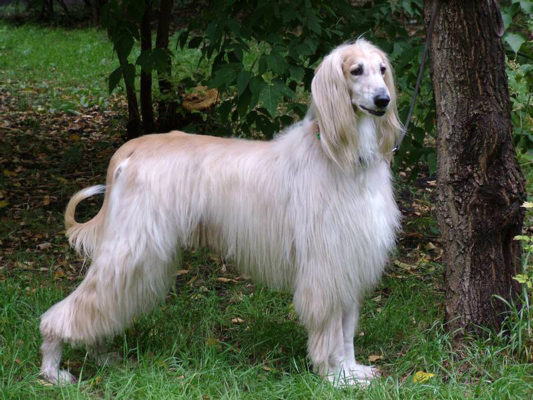
The Aboriginal Afghan Hound behaves as an equal member of the family. This breed is not an addition to man or his amusement. Many people buy a greyhound for its appearance, and after a while, they stop paying proper attention to it. You will need a lot of patience to raise and maintain this pet. If you are not ready to treat the greyhound as your child, it is better not to consider buying this breed.
Table of Contents
Breed Information
| Another Name | Bakhmull, Bakhmull Tazi, Tazi Bakhmull |
| Origin | Afghanistan |
| Height | Males 68-73 cm Females 65-70 cm |
| Weight | 23-36 kg |
| Fur | The coat from the withers to the tail along the entire spine is shorter and thicker, on the chest sides and limbs – long, thin and silky |
| Color | Black, blue, red, white, pale, golden, tiger, or apricot. Combinations of two or three colors are possible |
| Lifespan | 12-14 years |
| FCI Classification | Breeds outside the FCI classification |
| Group | Hunting Dogs |
| Price | From $300 |
Breed Photos
Origin History
The Aboriginal Afghan Hound is considered a very ancient breed, and there is evidence to support this fact. In the cave of the Belt in Iran, drawings depicting greyhounds have been discovered. Some sources claim that rock carvings have been found in northeastern Afghanistan, dating back to 2200 BC. Even in the Nile River Valley, images of this breed have been found among ancient burials. It suggests that even in those days, the dog was treated with special adoration.
The greyhound used to be called Saluki; a name is still relevant in Iran and Arabia. Together with caravans, the breed came to Afghanistan and became a national treasure.
In 1920, Major Bell Murray and Miss Jean Manson of the British Army removed several specimens from areas that bordered India and Afghanistan to Scotland. They admonished breeders not to turn the Aboriginal Afghan Hound into an ornamental dog. This ancient breed has always had excellent working skills and had a reputation as a wonderful hunter.
At first, the kennels bred both long-haired and short-haired representatives of the breed. After World War II, the number of Afghan Greyhounds decreased, but a couple of years later, the breed became popular again. Eventually, the species with the longer hair won out. Breeders began to perfect the exterior of the breed. Of course, in the U.S. and Europe, the greyhound ceased to be used for its intended purpose and completely turned into a domestic dog. But in Afghanistan, they still use the aboriginal for hunting.
Appearance
The head of the Aboriginal Afghan Hound is wedge-shaped. The frontal part is flat. The jaws and teeth are strong; the dog has a scissor-shaped bite. The eyes are widely set, have an almond shape. A cold stare characterizes the Aboriginal Afghan Hound. The ears are low set, floppy, and close to the head. The neck is a feature of the breed, always long and graceful.
Torso elongated shape, chest oval. The waist is short and slight; the abdomen is trim. The limbs are long and muscular. The tail is broad at the base and tapers toward the end, forming a ring.
The coat from the withers to the tail is shorter and thicker. The sides, ribs, and limbs are covered with long strands. The muzzle is covered with short hair, and from the forehead, it falls in silky strands. The coloration is usually different shades, admissible black, blue, red, white, pale, golden, or apricot. Combinations of two or three colors are possible. The tiger color is considered the standard.
Character
The Aboriginal Afghan Hound behaves as an equal member of the family. This breed is not an addition to man or his amusement. Many people buy a greyhound for its appearance, and after a while, they stop paying proper attention to it. You will need a lot of patience to raise and maintain this pet. If you are not ready to treat the greyhound as your child, it is better not to consider buying this breed.
At the same time, the greyhound has a cheerful character, always cheerfully taking any interaction with the owner. These dogs explore everything around them with interest, remember their mistakes, and not make them again.
The nobility of the dog is manifested not only in its appearance. At home, the animal behaves very compliantly, never bothers its owner, and calmly waits for him to get the attention he deserves. The dog treats children with special love and responsibility, so you can safely leave them to play.
Because of its high intelligence, the greyhound can make decisions on its own during the hunt. The Aboriginal Afghan Hound is considered a very hardy hunting dog.
Care
The care of the Aboriginal Afghan Hound is a key issue to consider before breeding. The coat of a pet requires special care. To avoid the emergence of tangles, it is necessary to comb them with special combs and brushes. If the dog participates in exhibitions, it should be bathed every week with special shampoos for long hair. Then dry the coat and be sure to comb it.
Training
During training, a special approach should be taken. This breed has good intelligence and can make its own decisions, so it is not recommended to subject it to man’s will.
The Aboriginal Afghan Hound needs a lot of physical activity. It is desirable to give the dog a good run every day. In urban conditions, the dog should be kept on a leash.
Common Diseases
During a walk, debris, branches, and leaves may cling to the Aboriginal Afghan Hound coat. Always examine your pet after a walk, as all these things can traumatize the skin. Older representatives of the breed have problems with the hind limbs, and the dog begins to stand poorly. In general, the greyhound has good immunity.
The Aboriginal Afghan Hound is prone to such diseases:
- intestinal congestion;
- tumors;
- dermatitis;
- chylothorax;
- cataract.
Nutrition
The Aboriginal Afghan Hound is picky about its diet as well. In general, the diet should consist of meat, vegetables, soups, and porridge. A balanced and proper diet is the key to the health and long life of the pet. Water should always be readily available.
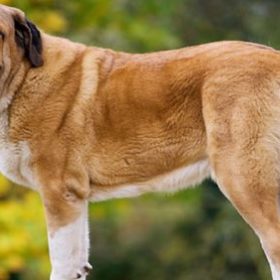 Spanish Mastiff
Spanish Mastiff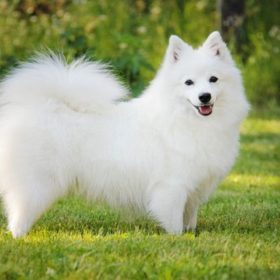 Japanese Spitz
Japanese Spitz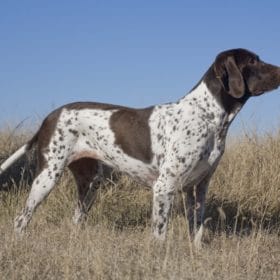 Old Danish Pointer
Old Danish Pointer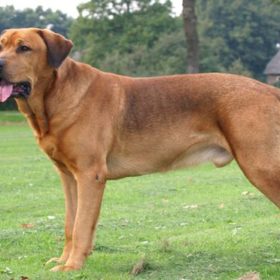 Broholmer
Broholmer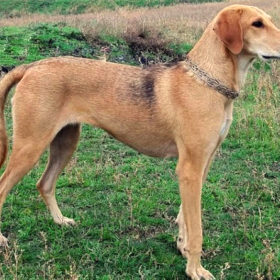 Russian Piebald Hound
Russian Piebald Hound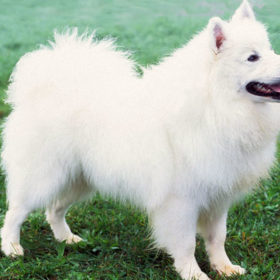 American Eskimo Dog
American Eskimo Dog